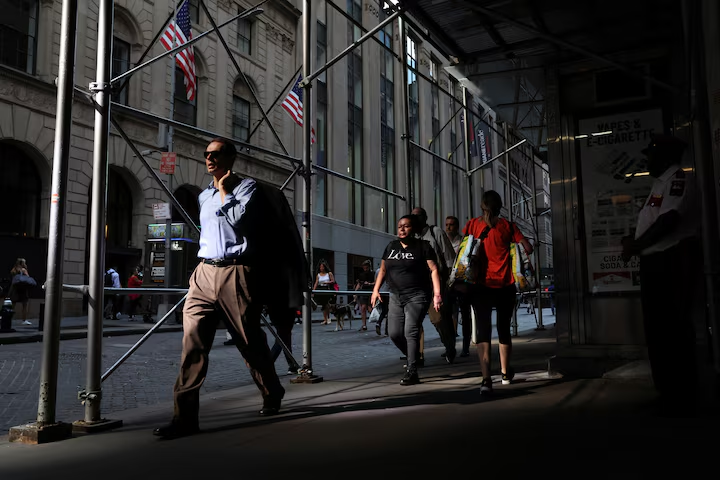The U.S. unemployment rate jumped to 4.3% in July, reaching its highest level in nearly three years and fueling concerns about a potential recession. This marks the fourth consecutive monthly increase, up from 4.1% in June, according to the Labor Department.
The rate has risen from a five-decade low of 3.4% in April 2023, suggesting a significant slowdown in the labor market. Economists now anticipate a 50 basis point interest rate cut by the Federal Reserve in September, arguing that the central bank may have delayed easing monetary policy for too long. The slowdown in hiring had been indicated by sentiment surveys and an increase in unemployment benefits claims. The Fed’s previous rate hikes in 2022 and 2023 have impacted labor demand, with government data showing June hires at their lowest in four years.
The latest employment report revealed a 114,000 increase in nonfarm payrolls, well below the forecasted 175,000 and the 200,000 needed to keep up with population growth. The Bureau of Labor Statistics noted that Hurricane Beryl, which hit Texas during the survey week, had no significant impact on the data. However, the household survey showed a record 436,000 people unable to work due to bad weather in July.
Despite the weather, some sectors saw job gains. The healthcare sector led with 55,000 new jobs, followed by construction with 25,000, and leisure and hospitality with 23,000. Government employment increased by 17,000 jobs, with gains also in transportation, warehousing, and social assistance. However, the information industry, financial activities, and professional and business services saw declines, with temporary help services dropping by 8,700 jobs.
The average workweek decreased slightly, and average hourly earnings rose by 0.2% in July, following a 0.3% increase in June. On an annual basis, wages grew by 3.6%, the smallest gain since May 2021.
Economists are divided on whether the current data indicates an imminent recession. While the unemployment rate increase triggered the Sahm rule, a historically accurate recession indicator, some argue the rise is due to an increase in labor supply rather than layoffs. About 420,000 people entered the labor force in July, while household employment increased by only 67,000.
The broader measure of unemployment, which includes those who have stopped searching for work and those working part-time due to lack of full-time opportunities, rose to 7.8% from 7.4%.
Despite the concerning data, some economists believe the Federal Reserve has the tools to address the current economic weakness. Stocks fell sharply on Wall Street, the dollar dropped, and U.S. Treasury prices rose in response to the report. The Federal Reserve, which kept its benchmark interest rate steady at 5.25%-5.50%, is now expected to consider rate cuts in the coming months to support the slowing economy.
READ MORE:
